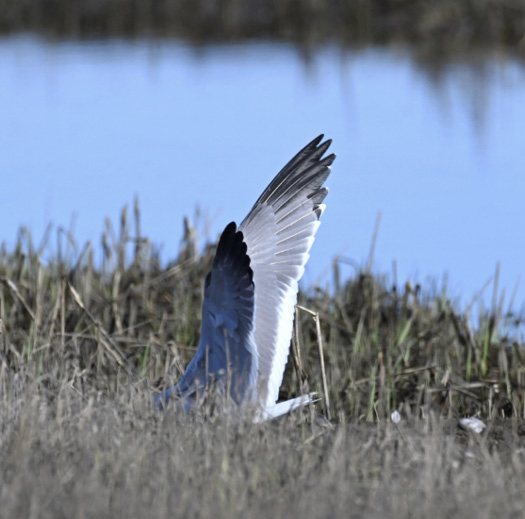Wayne R. Petersen

DAVID CLAPP
Characteristic of this column for the past several issues, the mystery bird once again has a disembodied pair of wings, seemingly lacks a head and torso, and has a short tail with little else to help determine the species. Obvious to discerning readers are a couple of clues to help solve the identification mystery. The first is a habitat clue. The mystery bird is a species that possibly prefers coastal habitats, a fact supported by a scrutiny of the background vegetation—a common coastal saltmarsh plant called saltwater cordgrass or smooth cordgrass (Sporobulus alterniflorus or, formerly, Spartina alterniflora). The next clue is the wings. The mystery bird’s wings are totally inappropriate in size, pattern, and shape for a shorebird or a tern, both of which are characteristic coastal groups. However, these clues, along with the overall size, shape, and coloration of the wings, their extensive black wingtips, and the broad white trailing edge to the secondaries, are clearly suggestive of a gull of some type.
To view the rest of the article you'll need to
subscribe. Bird Observer publishes original articles on birding locations, on avian populations and natural history, on regional rarities, field notes, field records, photographs, and art work.